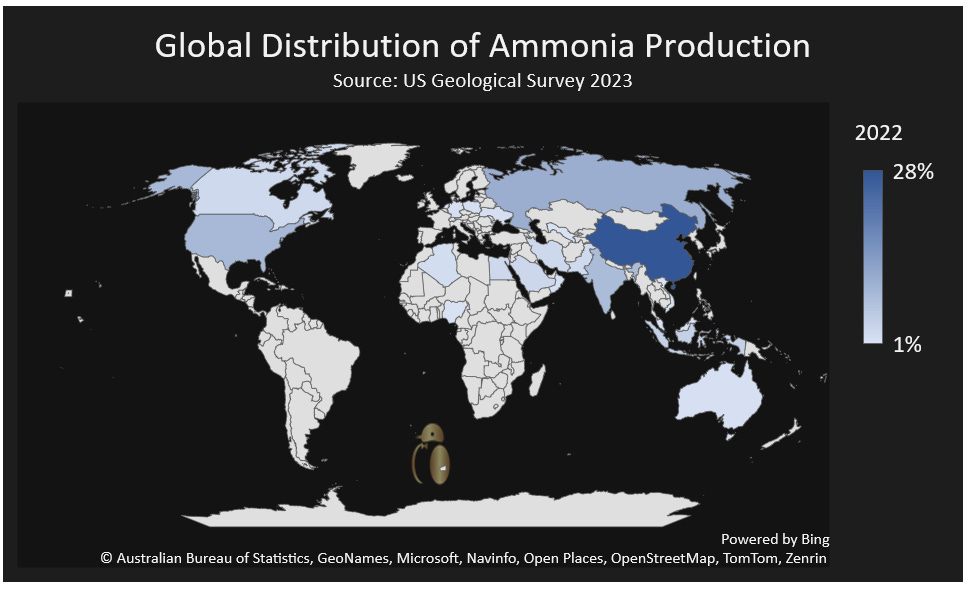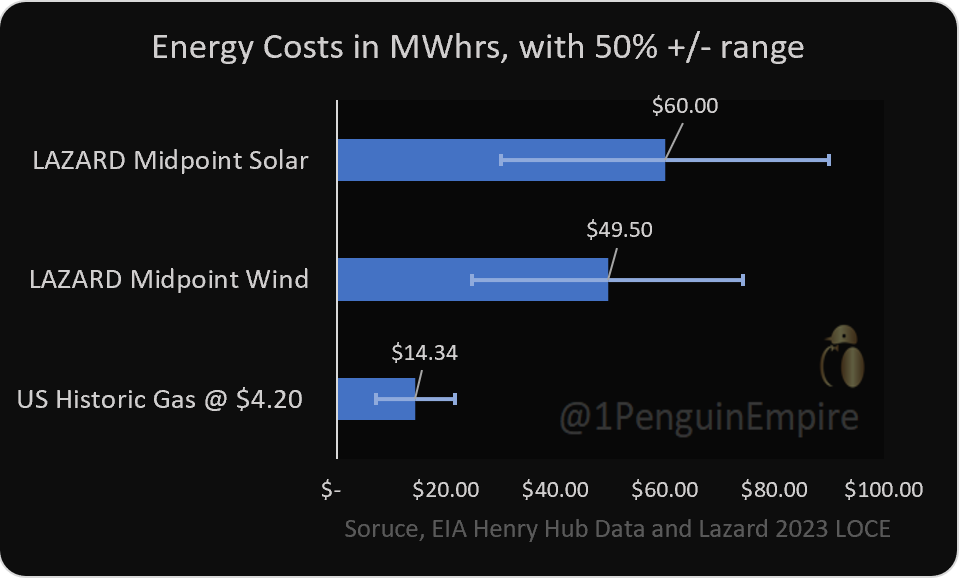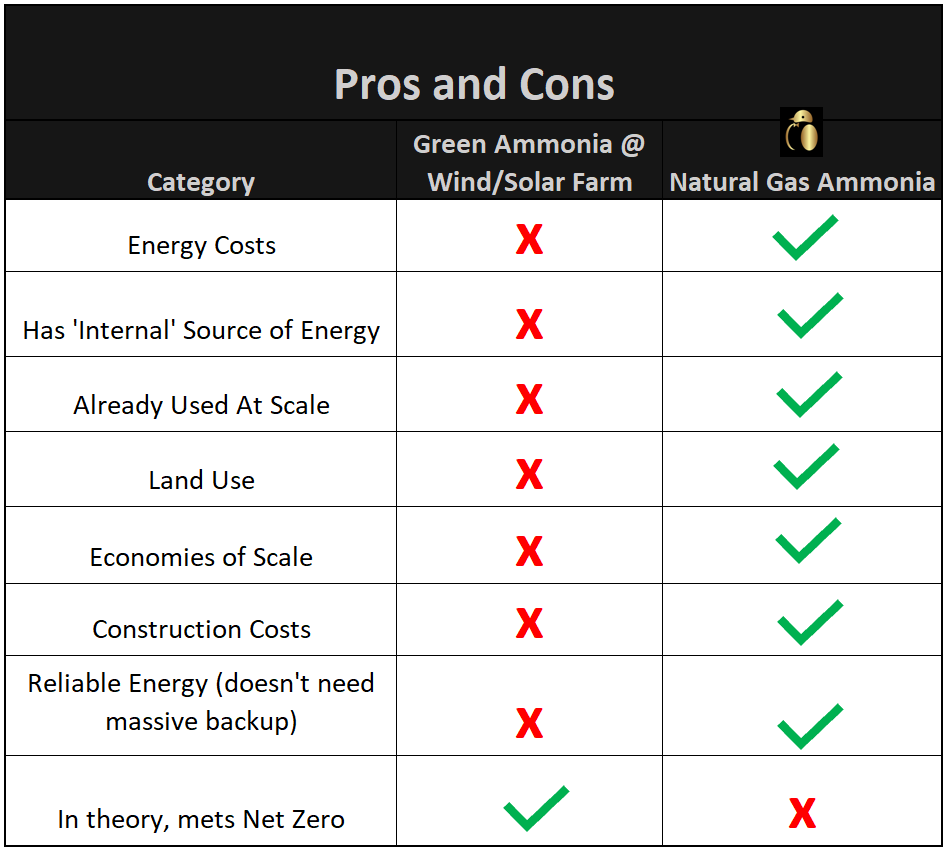What’s Feeding A Few Billion Souls Worth?
Nitrogen fertilizers are crucial for feeding the world. Nearly all nitrogen fertilizers use fossil fuels as a primary ingredient. Despite the disdain for fossil fuels, they literally feed the world.
“I cannot recall any time in the past when we had to struggle so much to get a decent harvest,” W.M. Seneviratne, a 65-year-old Sri Lankan farmer, reported to Reuters. He wasn’t alone in his plight after Sri Lanka banned chemical fertilizers in 2021.
When President Gotabaya Rajapaksa implemented the ban, Sri Lanka’s government claimed that organic, sustainable farming would improve peoples’ lives. But like most things, money had something to do with it. Before Covid-19, Sri Lanka depended on tourism. By 2021, the cash-strapped government searched for ways to save money. Sustainable farming was cheaper than buying foreign-made chemical fertilizers…if everything went to plan.
But it didn’t. Sri Lanka swiftly imposed the ban, shocking an already weak economy. Farmers scrambled to get what limited fertilizers they could find. Crop yields plummeted, crushing food production and the nation’s tea exports. A cascade of protests, food shortages, rampant inflation, and a collapse of basic services followed in the wake of the ban. Sri Lanka quickly walked back the ban but things continued to spiral out of hand. Sensing an uprising in the making, President Rajpaksa fled his residence before protesters stormed the presidential palace and set fire to the prime minister’s house. After escaping to the Maldives, Rajpaksa resigned the presidency.
It’s hard to sort out how much damage was done by the fertilizer ban and how much was caused by the collapsing economy, etc. Regardless, the drop in food production was swift. Sri Lanka has two harvest a year. In the main harvest, crop production dropped ~ 40%-50%, according to the UN and Sri Lanka’s government. The USDA estimated that for 2-years after the short-lived ban, rice yields were down around ~25-33%.
A key ingredient: nitrogen fertilizers.
There’s a strong link between nitrogen fertilizer use and crop yields. Yes, fertilizer use and other advances tend to go hand-in-hand. For example, hybrid crops can ward off disease and produce higher yields. Yet hybrid crops may need more nitrogen than non-hybrid crops.
We’re not making much land anymore, but the population keeps going up. Around 1800, global population stood at 1 billion. By around 1900, it was ~ 1.7 billion. At that time, farmers supplemented crop production with manure and imported nitrogen minerals from Chile. But they could only do so much.
In 1898, Sir William Crookes (then President of the British Association for the Advancement of Science) warned that the world soon faced mass starvation. But he added that "through the laboratory… starvation may ultimately be turned into plenty."
By the early 1900s, scientists at BASF - the German chemical giant - cracked the code on a practical way to produce synthetic nitrogen on a commercial scale. Today it’s known as the Haber-Bosch process. (There’s a fascinating book on that story: The Alchemy of Air.)
By the 1960s, the earth’s population stood at 3 billion, almost twice the population when Sir William Cooke warned of impending famine. And the population kept growing: now it’s ~ 8 billion.
Yet surprisingly, farmland use per person declined. In the 1960s, farmers used an average of 0.45 hectares of land per person. By 2016, farmland use dropped to just 0.21 hectares per person (a hectare is 100m x 100m or about 2.47 acres).
How did the population go up while farmland use per person went down? One key reason is fertilizer use.
In 2012, a report (by Erisman et al.) published in Nature, estimated that synthetic fertilizers support roughly 48% of the world’s population. Our World in Data provides a nice visualization.
Nitrogen is (nearly) everywhere but plants can’t ‘digest’ it without help.
While plants typically need all Big 3 nutrients (nitrogen, phosphorus and potassium), nitrogen is the most used. Nitrogen is an essential building block for proteins.
But nitrogen has a big problem.
While ~78% of the air we breathe is made up of nitrogen, they’re triple bonded with other nitrogen atoms (N2). Those triple bonds are extremely strong and difficult to break, making raw nitrogen pretty much useless to plants.
‘Fixing’ nitrogen to make it useful.
Fixing nitrogen breaks the triple bonds, combines nitrogen with oxygen or hydrogen to make a new combo-molecule that is easier for plants to ‘digest’ (more or less).
Bacteria & fungi can ‘fix’ nitrogen from decaying animals, waste, and plant matter, etc. Some plants- such as clover and soybeans- are good hosts for nitrogen fixing bacteria. So, if you rotate those crops in, the bacteria adds nitrogen to the field. And even lightening can fix nitrogen.
But there’s a limit: nature takes its sweet time - bacteria are slow workers.
And there’s only so much cow manure or bird waste we can scrape off rocks. One ton of cattle manure only has~12lbs of nitrogen. So, if you need 100 lbs. of nitrogen per acre, you need ~ 8 tons of smelly cow pies to do the job. (Yes, cow manure has other nutrients too, but you get the point).
To make it more complex, natural deposits of ‘fixed’ nitrogen are rare.
So we use synthetic nitrogen fertilizers to supplement the natural nitrogen ‘fixing’ process.
But like most anything, fertilizers have downsides. Loose fertilizer in the soil can wash away, impacting waterways and feeding algae blooms. And too much pure nitrogen can kill plants. But precise fertilizing in smaller batches can reduce the impacts.
Ammonia production: the basis for nitrogen fertilizer
Ammonia is one of the main ways that bacteria fix nitrogen. So, when we make synthetic ammonia, we’re basically speeding up and concentrating what nature already does.
Each year, we make about 145,000- 150,000 metric tons of synthetic ammonia. Roughly 70-80% is turned into nitrogen fertilizers. The biggest producer is China at 28% of global supply. Russia comes in at 11%, the US 9%, India 8%, followed by Indonesia (4%).
In total, 97% of the energy used in ammonia production comes from fossil fuels: 70% gas, 26% coal, 1% oil, and 3% electricity (including hydropower & renewables).
Now we’re getting to the heart of synthetic nitrogen manufacturing which has two main steps:
‘Make’ hydrogen.
Combine hydrogen and nitrogen under pressure (with a catalyst) until they break apart and reform into NH3 (ammonia). This is the Haber-Bosch process.
Of course, it’s not that simple.
Hydrogen also has a problem. it’s pretty much everywhere but it’s bonded with other stuff.: like oxygen, or carbon (fossil fuels). To get hydrogen out, you need lots of energy to break down the molecules.
But like it or not, fossil fuels are an excellent source for hydrogen. Why? It’s 2 for the price of 1: hydrocarbons have both hydrogen and a massive source of ‘internal’ energy needed to ‘make’ the hydrogen. Natural gas is a major source of hydrogen because of its energy content, and it has the highest ratio of hydrogen to carbon atoms of fossil fuels.
Another way to get hydrogen is to use electricity to split water. However, water (by itself) doesn’t have a massive internal source of electricity. You need a separate, ‘exterior’ source of energy to break down the water molecules. So instead of 2 for the price of 1 with hydrocarbons, it’s more like 1 for the price of 2.
Now if you want to use renewable energy to power that water splitting, you get 1 for the price of 3. Renewables (wind and solar) are extremely unreliable. Large scale industrial plants don’t like ‘finicky’ power that’s always flickering on and off like a motel sign in a horror movie. So, not only do you need an exterior source of energy, you also need large scale storage.
The EIA reports in detail on different ways to make ammonia. We’ll look at the state-of-the-art ways to make ammonia from both natural gas and green ammonia. Here are two simplified charts.
Vs This:
There’s a lot to break down here.
Here’s the real problem with ‘green’ ammonia: electricity tends to cost more than gas. Yes, the chart shows making hydrogen with electricity uses ~9.5 MWhrs of energy vs gas to ammonia at ~ 7.7 MWhrs. That’s because gas plants burn gas to create lots of heat to combine natural gas and steam to form hydrogen (and then the water-gas shift after). Excess heat can be recycled to power the next step, Haber-Bosch process. Whereas electric production needs to (in essence) power both steps.
But ‘green’ ammonia energy inefficiency isn’t the main problem. The cost of energy is the biggest part.
Imagine if fuel costs went up 2 -3 x for an airline. You’d probably be upset over the ticket prices. Yet that’s nothing compared to ammonia production. Fuel costs 20-30% of an airline’s costs. But for ammonia production, natural gas is ~ 70% of production of production costs (according to CF Industries).
Since costs are a massive chunk of the ammonia costs, it make sense to find the cheapest reliable source of energy you can.
Not all energy costs the same. Gas tends to be much cheaper than electricity, based on energy content.
In a nutshell, electricity isn’t a source of energy, it just delivers energy. Natural gas is a source of energy.
A hundred years ago, we used to make ammonia from hydroelectric power. But electricity is manufactured. That electricity was more valuable as power for cities and towns and we gradually shifted to fossil fuels for ammonia production.
Natural gas, thanks to fracking, is abundant and very cheap in places like the US and Canada. Europe, for the most part, banned fracking and relied on Russia for gas. We saw how that turned out. And we learned that when fossil fuel prices rise, the cost of renewables tend to go up as well.
If you have a source of cheap natural gas, green ammonia can’t compete. And it makes sense. Electricity is manufactured, usually from… natural gas. So, if you can simply bypass the middleman (in this case electricity), you’re winning.
Apples-to-apples comparison.
Unfortunately, in the US, gas and electricity are quoted in different units. But it’s a pretty simple conversion. It takes about 3.412 MMBtus to equal the energy content of 1 MWhr of electricity. Since the late 1990s, the average US price of natural gas was about $4.20 an MMbtu and that works out to $14-15 per MWhr worth of energy.
Of course, natural gas went north of $8 a MMbtus (on a monthly average) in the US during the initial panic following Russia’s invasion of Ukraine. But for reference, $10 nat gas is just under $35MWh. In Europe, high gas prices may change the story but with high gas prices also comes high electricity prices. So, the question is not if gas prices rise, but do they stay cheaper than electricity?
Renewables in the US are generally far more expensive than gas. Lazard publishes estimates of the costs of renewables. Based on their 2023 estimates, wind electricity costs range ~ $24-75 per MWhr (US) with a midpoint of $49.50. That’s roughly equivalent to $14.50 natural gas. Solar ranges from ~ $24-96/MWhr with a midpoint of $60. That midpoint is roughly equivalent to $17.59 for natural gas.
And those estimates for renewables assume you don’t need that energy when the sun isn’t shining or the wind isn’t blowing.
Here’s a comparison of the cost of energy of electricity and natural gas using the sane energy measures (MWhrs). Key point: it doesn’t include the massive potential storage costs for renewables which would give natural gas the edge if the price was the same.
On China…China depends heavily on coal-ammonia in part because of domestic coal. However, the coal-to-ammonia process is less energy efficient than gas. But, in China, cheap coal can make up for the lack of efficiency.
But the greens envision lots of small ammonia plants located and wind farms all around the countryside. Wouldn’t that bypass those problems?
The other option is for ‘green’ ammonia plant ramp up and down with renewables to ‘accommodate’ the fluctuations. If the wind is extra strong in the morning, you’ll make extra hydrogen, store in in a specialized tank, and then use it later when the wind isn’t blowing as hard.
There are 3 fundamental problems with that approach:
Economies of Scale. According to a whitepaper by Argus, bigger (over 200,000 tonne/yr) is better. Smaller plants built between 2015-2020 cost 1.5 to 2x more than larger plants, by tonne of capacity.
Based on 2023 IEA data, fast ramping electrolyzers cost 30% more than steady-state ones. However, the fast-ramping electrolyzers may be more efficient. The downside with fast ramping-electrolysers is you’ll need to spend energy to store hydrogen. Hydrogen storage takes energy since hydrogen is a light gas and needs to be compressed or liquefied.
Wind in particular takes up a lot of space. Did you notice 10 turbines in the diagram? On average, a 2.5 MW rated land-based turbine will produce around 1MWh of electricity/hr (assuming an average 40% utilization). Since it takes about 9.5 MWhrs to make 1 tonne of ammonia/ hr. Bingo…10 turbines.
And these are BIG turbines. GE’s 2.3-2.8 MW rated turbines have diameters ranging from 380 feet (116m) to 433 feet (132m). Just one turbine has a longer span than a football field or even a football pitch. Of course, those numbers depend on location, turbine, and wind/solar mix.
Compounding Problems: Increasing ammonia demand while driving up costs.
As if all that wasn’t enough, different visions of “Net-zero” include… tripling demand for ammonia for ‘green’ fuels for aircraft, ships, etc. If we intentionally drive-up demand for ammonia while simultaneously making it more expensive, what could possibly go wrong?
Fossil fuels are essential to feeding the world.
has written extensively on how to think of fossil fuels. He argues that good thinking requires carefully weighing the pros and cons. If someone ignores the very clear benefits of something while catastrophizing the supposed harm, this can lead to absurd remedies that are worse than the reported sickness. He argues that:“An anti-human environmental philosophy is blinding us to the fact that our environment is improving and that fossil fuel energy is an essential cause.” And “once you start weighing costs and benefits of alternatives, whether with energy or thinking about climate, it’s a totally different game and people have to think about it in a rational way versus a religious way.”
If we’re going to balance the pros and cons of fertilizer, what’s feeding a few billion people worth? The answer should be obvious: it’s extremely valuable.
Knowing their incredible value, we should encourage the safe and efficient use of fertilizers while minimizing the downsides. PLUS we should encourage low cost inputs to ensure an abundant supply, especially for the world’s poorest. That means cheap and abundant natural gas for most of us and coal for places like China. If green fertilizers or other innovations can find a better and cheaper way, it would be a welcomed advancement. But as it stands, fossil fuels make almost all of the world’s nitrogen fertilizers and green fertilizers are a far more complex and expensive way to help feed billions of people.
As always, thanks for reading!











Excellent comprehensive article on a critical food production resource.
Also see book: "Alchemy of Air"
Unfortunately the enviros seem to lack the willingness or the capacity to act in a rational, pro-humanity fashion. Excellent article